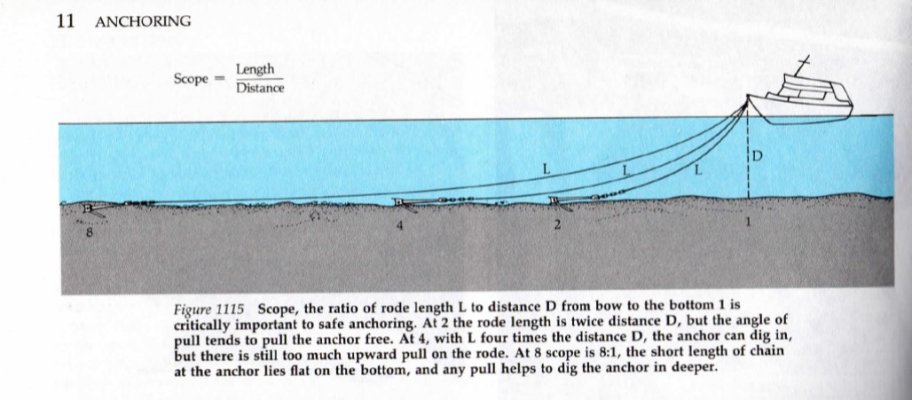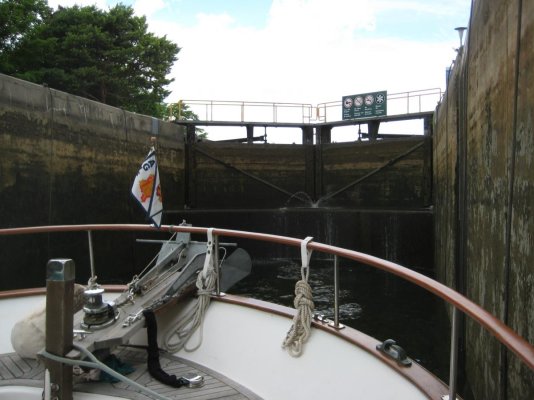Art I thought so too but that's not the case.
I was convinced of it but now can't get my head around it. If 3-1 is 90 feet out and 30' down. 1-1 is length of rode 30' and depth 30'. Straight up and down rode. You can't have 0 unless the boat is submerged up to it's bow roller in the sea bottom. My whole anchor scope concept is scrambled now.
It's the length of the rode and the depth. A vertical rode ready for weighing is 1-1. I had always thought 1-1 was 30' horizontal distance and 30' deep. The distance (horizontally) from the bow roller to the anchor is not considered at all. Horizontal distance is expereesd in the length of the rode deployed. I had always thought of 1-1 as 30' horizontal and 30' deep .. or a 45degree rode. Chapman describes it as 30' of rode and 30' deep. I don't like it either.
IMO - If one of the #'s 1 relates to scope... then for scope to exist there must be an angle of rode from bow to anchor. Otherwise... if rode is 100% plumb off bow to anchor there exists "Zero" scope. Thus 1:0!







 and
and 


 use whatever works for you
use whatever works for you